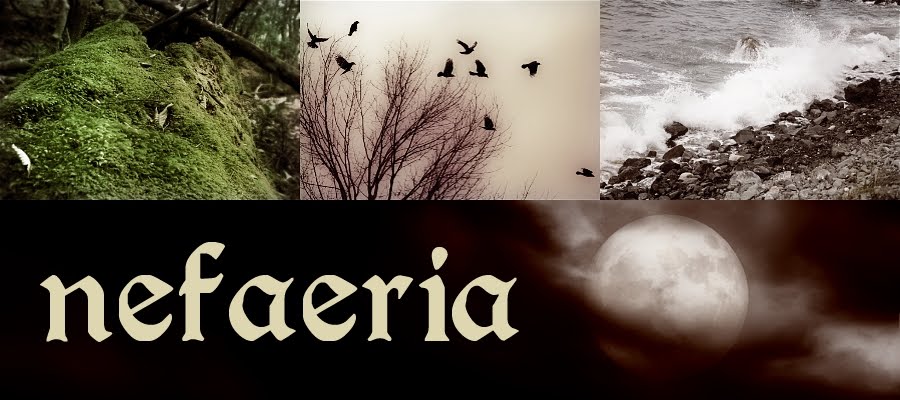
Other Names: Blue Weed, Devil's Weed/Thistle, Snakeflower
Description: A biennial often thought of as a 'noxious weed', this plant thrives in dry, 'waste areas', on the side of roads and fence rows, and in meadows. It is found throughout Europe and North America, but some sources say that it was originally introduce from Africa.
Viper's Bugloss has pretty blue spiked flowers, and on the rare occasion, white flowers. It grows up to approximately 90 cm, with lancet leaves that are quite coarse and hairy.
It flowers generally between May to September.
Warnings: As with all herbs, one should make sure to be thoroughly informed before ingesting them, and is best to do so under the guidance of a qualified healer.
Although there are no confirmed cases that I am aware of, there are some reports that people have been poisoned by ingesting the leaves. You can also get a pretty bad case of dermatitis if you touch the prickly leaves, so handle with care!
Cultivating: Hardy to a zone 0, Viper's Bugloss is certainly not frost tender!
You can grow it by seed, planted quite close to the surface (perhaps about 5 mm), in a sunny spot. It prefers well drained soil, and as you can see by the photo above, it will grow in gravelly soil that is so poor in quality, that other plants couldn't even think of growing there. A pH of around 6 to 7 is perfect.
Make sure to water when it hasn't rained in a while, otherwise it should be good. As well, if you don't want a whole bunch of other plants popping up (i.e. taking over the garden, as it will!), then clip off the flowers before they get a chance to drop their seeds. This will happen around August to September.
Medicinal/Remedial Properties and Lore: Antitussive, demuclent, diaphoretic, diuretic, emmollient, vulenary.
Historically, Viper's Bugloss was thought to cure snake bites, or keep people from being bitten by snakes.
In Brother Aloysius' Comfort to the Sick, he claimed that by ingesting the dried root, it would be a helpful remedy to those with epilepsy, and an infusion of leaves and stems would aid with pneumonia, rheumatism, and measles.
Culpepper claimed that it would work against poisonous creatures and herbs; the root and seed was an effectual cure for melancholy and grief, and that having some seeds in the wine would 'create an abundance of milk' in nursing mothers. He also thought that it would take away 'pains in the kidneys, back, and loins'.
Today, some herbalists use it in the treatment of headaches, skin problems, and fevers.
Magical Properties and Lore: Culpepper called Viper's Bugloss 'a most gallant herb of the Sun', and can be a herb to use in ritual in honouring deities associated with the Sun.
Because of it's long association with serpents, it also might be an appropriate herb when working with a snake totem, or deities associated with snakes.
It has been suggested by the folks over at Pagan News that Viper's Bugloss might be the missing Anglo-Saxon herb.
Other Uses: Viper's Bugloss is a very valuable plant to have around if you want to attract pollinators; rumor has it that the honey is divine!
Sláinte!
Laurel
You can grow it by seed, planted quite close to the surface (perhaps about 5 mm), in a sunny spot. It prefers well drained soil, and as you can see by the photo above, it will grow in gravelly soil that is so poor in quality, that other plants couldn't even think of growing there. A pH of around 6 to 7 is perfect.
Make sure to water when it hasn't rained in a while, otherwise it should be good. As well, if you don't want a whole bunch of other plants popping up (i.e. taking over the garden, as it will!), then clip off the flowers before they get a chance to drop their seeds. This will happen around August to September.
Medicinal/Remedial Properties and Lore: Antitussive, demuclent, diaphoretic, diuretic, emmollient, vulenary.
Historically, Viper's Bugloss was thought to cure snake bites, or keep people from being bitten by snakes.
In Brother Aloysius' Comfort to the Sick, he claimed that by ingesting the dried root, it would be a helpful remedy to those with epilepsy, and an infusion of leaves and stems would aid with pneumonia, rheumatism, and measles.
Culpepper claimed that it would work against poisonous creatures and herbs; the root and seed was an effectual cure for melancholy and grief, and that having some seeds in the wine would 'create an abundance of milk' in nursing mothers. He also thought that it would take away 'pains in the kidneys, back, and loins'.
Today, some herbalists use it in the treatment of headaches, skin problems, and fevers.
Magical Properties and Lore: Culpepper called Viper's Bugloss 'a most gallant herb of the Sun', and can be a herb to use in ritual in honouring deities associated with the Sun.
Because of it's long association with serpents, it also might be an appropriate herb when working with a snake totem, or deities associated with snakes.
It has been suggested by the folks over at Pagan News that Viper's Bugloss might be the missing Anglo-Saxon herb.
Other Uses: Viper's Bugloss is a very valuable plant to have around if you want to attract pollinators; rumor has it that the honey is divine!
Sláinte!
Laurel

2 comments:
Viper's bugloss is one of my very favorite plants. I love seeing that stunning shade of blue on the roadsides, and was beyond thrilled when it turned up on my property one year (alas, never again). Thanks for the lore and gorgeous pic!
You are most welcome :)
That is quite surprising that it didn't come back. Maybe with a little help from you, you can have plenty on your land!
May there be plenty of Viper's Bugloss for you and yours ;)
Laurel
Post a Comment